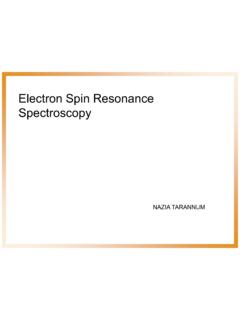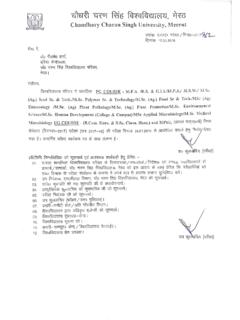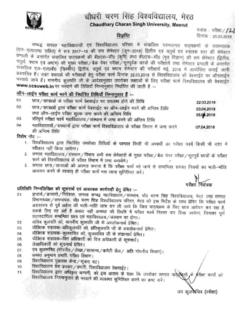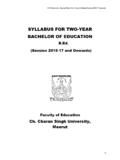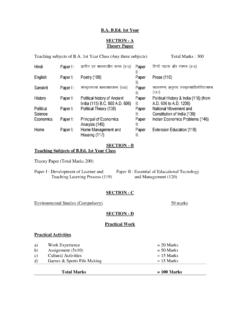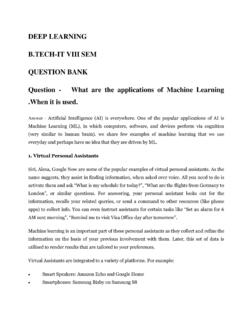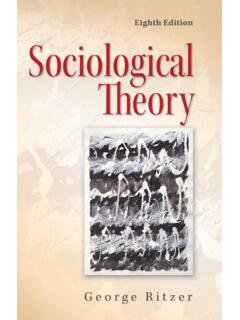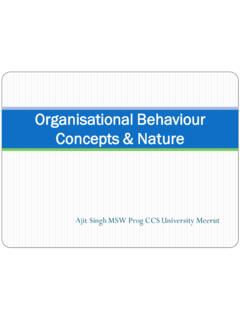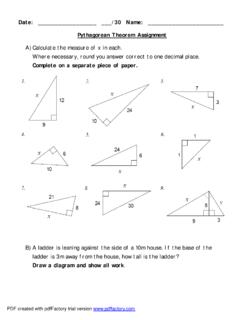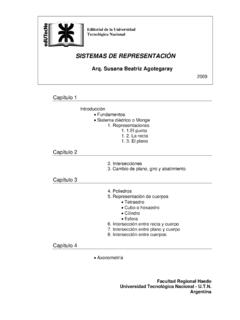Transcription of PRINCIPLES OF MANAGEMENT AND ORGANISATIONAL …
1 GBA S1 01 PRINCIPLES OF MANAGEMENT ANDORGANISATIONAL BEHAVIOURSEMESTER 1 BACHELOR IN BUSINESS ADMINISTRATIONBLOCK 2 KRISHNA KANTA HANDIQUE STATE OPEN UNIVERSITYPDF created with pdffactory Pro trial version ExpertsProf. Nripendra Narayan Sarma, Maniram Dewan School of MANAGEMENT , KKHSOUProf. Munindra Kakati, VC, ARGUCOMProf. Rinalini Pathak Kakati, Dept of Business Administration, GUCourse Co-ordinator :Dr. Smritishikha Choudhury, Asst. Prof., KKHSOUDr. Chayanika Senapati, Asst. Prof., KKHSOUSLM Preparation TeamUNITSCONTRIBUTORS8Dr. Arabindo Debnath, Bineswar brahma Engineering College9Dr. Devajeet Goswami, KKHSOU10Dr. Chayanika Senapati, KKHSOU11-14 Prof U. R. Dhar, Royal School of BusinessEditorial TeamContent:Prof Nripendra Narayan Sarma, KKHSOUL anguage:Retd. Prof. Robin Goswami, Cotton CollegeStructure, Format & Graphics:Dr. Chayanika Senapati, KKHSOUDr. Smritishikha Choudhury,KKHSOUR eprint, April 2018 This Self Learning Material (SLM) of the Krishna Kanta Handiqui State Open Universityis made available under a Creative Commons Attribution-Non Commercial-Share Alike License(international): and published by Registrar on behalf of the Krishna Kanta Handiqui State Open : Patgaon, Rani Gate, Guwahati - 781017 Housefed Complex, Dispur, Guwahati-781006; Web: University acknowledges with thanks the financial support provided by theDistance Education Bureau, UGC for the preparation of this study created with pdffactory Pro trial version IN BUSINESS ADMINISTRATIONPRINCIPLES OF MANAGEMENT ANDORGANISATIONAL BEHAVIOURB lock 2 DETAILED SYLLABUSUNIT 8:MotivationPage : 7-23 Motivation at Work; Theories on Motivation: Theory of HumanMotivation, McGregors Theory X and Theory Y, Herzberg s TwoFactor Theory of work Motivation; Delegation.
2 Meaning ofAuthority and PowerUNIT 9:Decision MakingPage : 24-38 Decision Making and MANAGEMENT ; characteristics of decisionmaking Types of Decisions; Steps in Decision Making;UNIT 10:LeadershipPage : 39-52 Meaning of Leadership; Theories Of Leadership; StylesLeadershipUNIT 11: ORGANISATIONAL BehaviourPage : 53-71 Concept of Human Behaviour: Nature of People, Value ofPerson (Ethical Treatment); Nature of Organisation Behaviour;Concept of Self Theory; Concept of Ability: Intellectual Abilities,Physical Abilities;UNIT 12:PersonalityPage : 72-88 Meaning and Determinants of Personality: Meaning ofPersonality, Determinants of Personality; Theories ofPersonality: The Big Five Personality Traits; Emotions andMoods: The Basic Set of Emotions; Perception: FactorsAffecting Perception; Concept of Interpersonal Behavior:Essential Interpersonal Competencies for Managers;Transactional Analysis; Ego States and Different Strokes; JobDesign: Job Characteristic ModelPDF created with pdffactory Pro trial version 13:Group Behaviour and Team DevelopmentPage : 89-106 Concept of Group and Group Dynamics; Types of Groups:Formal Group, Informal Group; Concept of Group Behavior:Group Norms, Group Cohesion, Inter-Group Behavior; GroupDecision-Making; Team: Types of Team; Team Building andManaging Effective TeamUNIT 14:Contemporary issues in ManagementPage : 107-130 Meaning of conflict MANAGEMENT , positive vs.
3 Negative conflict,types of conflict, managing conflict, stress MANAGEMENT ,sources of stress, stress MANAGEMENT strategiesPDF created with pdffactory Pro trial version INTRODUCTIONB lock 2 deals with the Organizational behaviour (OB), which is the study of the way people, interactwithin groups. Normally this study is applied in an attempt to create more efficient business block is a concise introduction to Orgnaisational Behaviour; it focuses on core topics of theorganisational behaviour and illustrates to show its application in practice. This block of the course hasbeen developed to cover various approaches to ORGANISATIONAL behaviour. This block also consists of MakingUnit-10 LeadershipUnit-11 ORGANISATIONAL BehaviourUnit-12 PersonalityUnit-13 Group Behaviour and Team DevelopmentUnit-14 Contemporary issues in ManagementPDF created with pdffactory Pro trial version 87 PRINCIPLES of MANAGEMENT and ORGANISATIONAL Behaviour (Block 2)UNIT 8: MOTIVATIONUNIT of of of s Need Hierarchy Gregor s Theory X and Theory s Two Factor of Us Sum To Check Your OBJECTIVESA fter going through this unit, you will be able to.
4 Ldefine the term motivationldescribe the Maslow s Need Hierarchy theory of motivation and itslimitationslenumerate the Mc Gregor s Theory X and Theory Y and limitationsand application of these two theoriesldetermine the relationship between theories X and Y and Maslow sneed hierarchylclassify the financial and non-financial techniques of created with pdffactory Pro trial version 88 PRINCIPLES of MANAGEMENT and ORGANISATIONAL Behaviour (Block 2) manager performs various functions to achieve the goals of theorganisation. Motivation is the psychological force that moves a person foraction and continuously inspire him in the course of action. In this unit wewill explain what is motivation and its important theories. You will find thisunit interesting as it will help you in understanding the basic factors whichmotivate OF MOTIVATIONThe term motivation is derived from the Latin word mover whichmeans to move and represent the force that moves people, and causesthem to act.
5 So, motivation can be defined as a process of channelling aperson s inner drive so that he wants to accomplish the goals of theorganisation. Motivation is a behavioural concept by which we try tounderstand why people behave as they do. A human being is an organicand not a mechanical system. He or she is a self-activated person. Theforce of motivation lies within our mind. It is dynamic force, setting a personinto motion or this context, we can discuss some of the definitions of motivationgiven by MANAGEMENT experts. Robert Dubin has defined motivation as Thecomplex of forces starting and keeping a person at work in an organisation Moreover, Dalton E. Mc Farland said The concept of motivation is mainlypsychological. It relates to those forces operating within the individualemployee or subordinate which impel him to act or not to act in certainways. On the other hand, Koontz and O Donnell define motivation as Motivation is a general term applying to the entire class of drives, desires,needs, wishes and similar forces.
6 Out of the above discussion, it can be understood that motivation ishighly individualistic. It is the essence of human behaviour. Motivation consistsof three are (a) Motives (b) Motivating factors and c) Attainmentof objectives. In an organisation motivation implies a planned managementprocess, which stimulates people to work to the best of their created with pdffactory Pro trial version 89 PRINCIPLES of MANAGEMENT and ORGANISATIONAL Behaviour (Block 2)The process of motivation can be -illustrated simply as follows 1 2 3unfulfilledIncentiveActionNeed5 4 Best AttainmentFulfilmentof Common Goalsof - Process of MotivationLET US KNOWM otivation is one of the most important factorsdetermining performance of employees. Motivatedemployees put higher performance as compared toother employees. In a study by William James, it was found thatmotivated employees worked at close to 80-90 percent of their relationship of motivation with others can be understood fromthe following x MotivationMotivation=Valency x ExpectancyACTIVITY a list of some unfulfilled needs ofemployees in an out few things blocking the persons inachieving their goals and also name some of them beyond YOUR PROGRESSQ 1: How does motivation affect behaviour ?
7 PDF created with pdffactory Pro trial version 810 PRINCIPLES of MANAGEMENT and ORGANISATIONAL Behaviour (Block 2)Q 2: What does happen when a person is not able to satisfy hisneeds?.. OF MOTIVATIONM otivation is an important function of MANAGEMENT . All managersshould induce their employees on the job to extract performance by motivatingthem. Below, we discuss some important aspects of )Utilisation of human resource : By motivation techniques, MANAGEMENT can properly utilise its human resources. This helps themanagers to increase the productivity of employees. By virtue ofmotivation employees can understand ORGANISATIONAL culture. Thereby,human resources can be properly )Use of material resources : By motivating employees of anorganisation, the material resources can also be used in a proper waywhich increases ORGANISATIONAL )Willingness for work : In an organisation, there may have someemployees who are physically and mentally capable to do work, butmay not be willing to work.
8 In such a situation, motivation can createwillingness among the employees for )Good labour relations : Motivation also helps an organisation inbuilding up a good labour relation. Thereby motivation become beneficialto MANAGEMENT and employees. So, motivation can reduce differentlabour problems such as absenteeism, labour turnover, indiscipline,grievances )Develops cooperation : Motivation can build up team spirit. Thereby,motivation makes possible to increase collective effort of employeesto the organisation. So, motivation forms the basis for cooperation toget the best achievement of organisation )Improve skill and knowledge : Motivated employees always try tobe as efficient as possible and to improve their skill and , motivated emplyees always resolve to do theirPDF created with pdffactory Pro trial version 811 PRINCIPLES of MANAGEMENT and ORGANISATIONAL Behaviour (Block 2)responsibilities in the best )Boosts Morale : Morale implies the attitude and feelings of employeesabout their work as well as situation of work.
9 Motivation can improvethe attitude and feelings of employees towards works. So, motivationcan also improve morale of )Facilitates change : Research based fact says that properly motivatedemployees are more receptive to accept changes. So, motivation helpsthe employees to adjust with changing )Sense of belongingness : A proper motivation system can improvethe sense of belongingness among the employees. As a result,employees can feel that organisation belongs to them. So, employeesbecome more concerned about the well being of the )Achieve ORGANISATIONAL objectives : Motivation can be defined ascore of MANAGEMENT . By motivation managers directly encourage theemployees towards the accomplishment of ORGANISATIONAL OF MOTIVATIONNow, we are aware of the fact that motivating the employees is veryimportant in organisations. But motivating employees is a difficult task forthe researches have been carried out on motivation. All of thememphasise that due to complex nature of human being no generalisation ispossible.
10 On the other hand, all theories are not universally applicable andthese are affected by time, place, and circumstances. Various theories ofmotivation can be classified as below s Need Hierarchy Maslow has developed the Need Hierarchy Theory forunderstanding human needs. According to Maslow, human needstend to follow a basic hierarchical pattern from the most basic needsto the highest level needs. Until the basic needs are fulfilled, personwill not try meet his higher level needs. The theory of Maslow isPDF created with pdffactory Pro trial version 812 PRINCIPLES of MANAGEMENT and ORGANISATIONAL Behaviour (Block 2)based on the needs of the people. He proposed a hierarchy of fivetypes of needs which are mentioned below-1)Physiological needs :- These are the primary needs of humanbeings and relate to the survival of the body. These needs aremore or less universal. These are called the needs of lowestlevel and they are to be satisfied first for existence and these needs are satisfied to the degree needed for theefficient operation of the body, a person s activities will be at thislevel and the other needs will provide him with little , this is a powerful motivating ) The physiological needs are -Food, shelter, clothing, water, air, sleep, sex )Safety or Security needs : These needs come next in thehierarchy.
